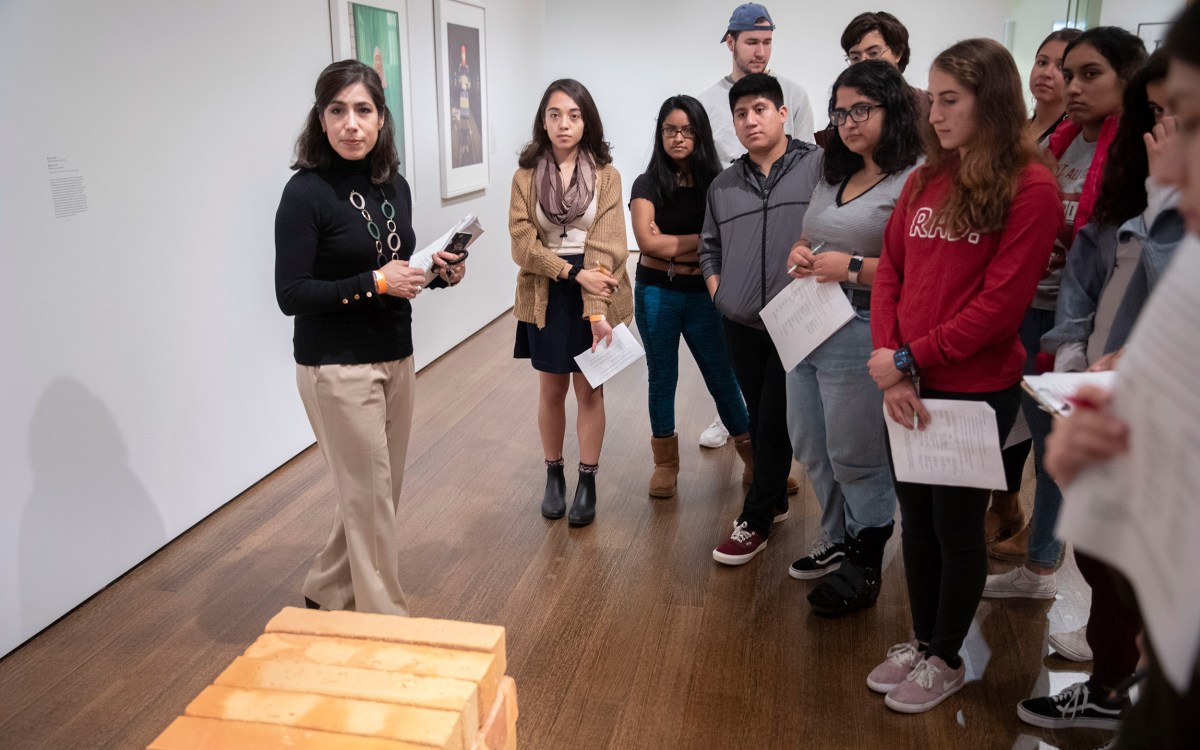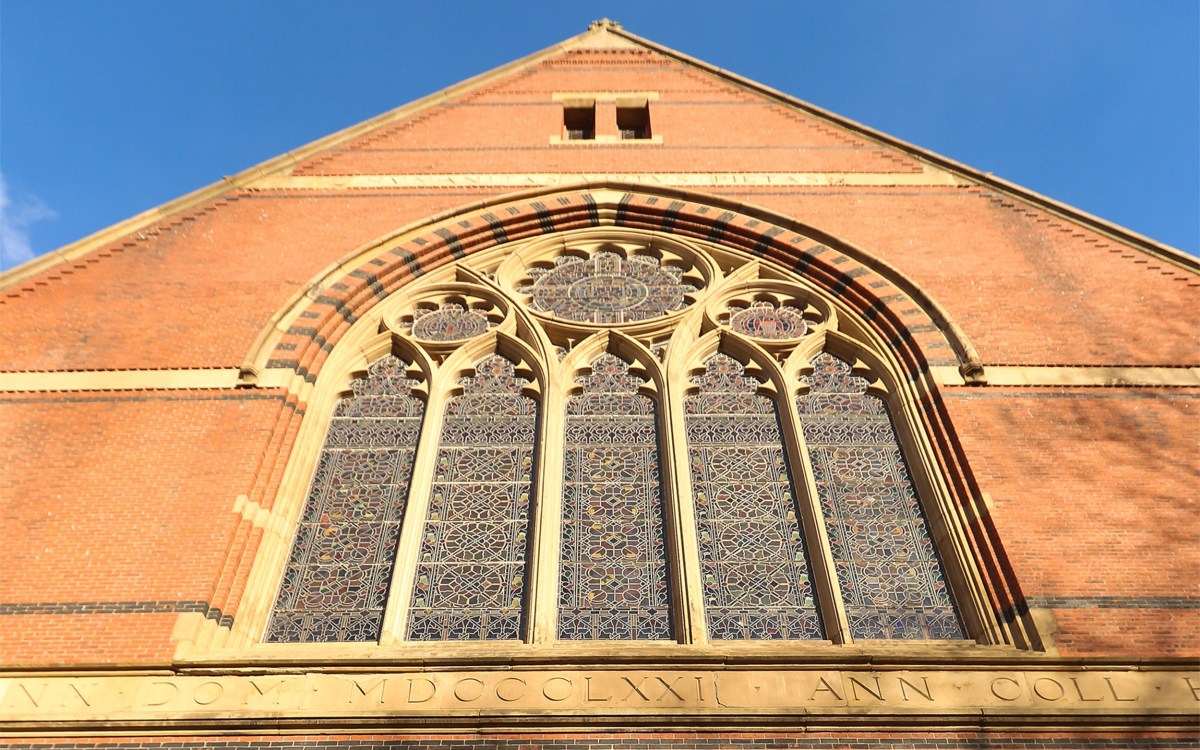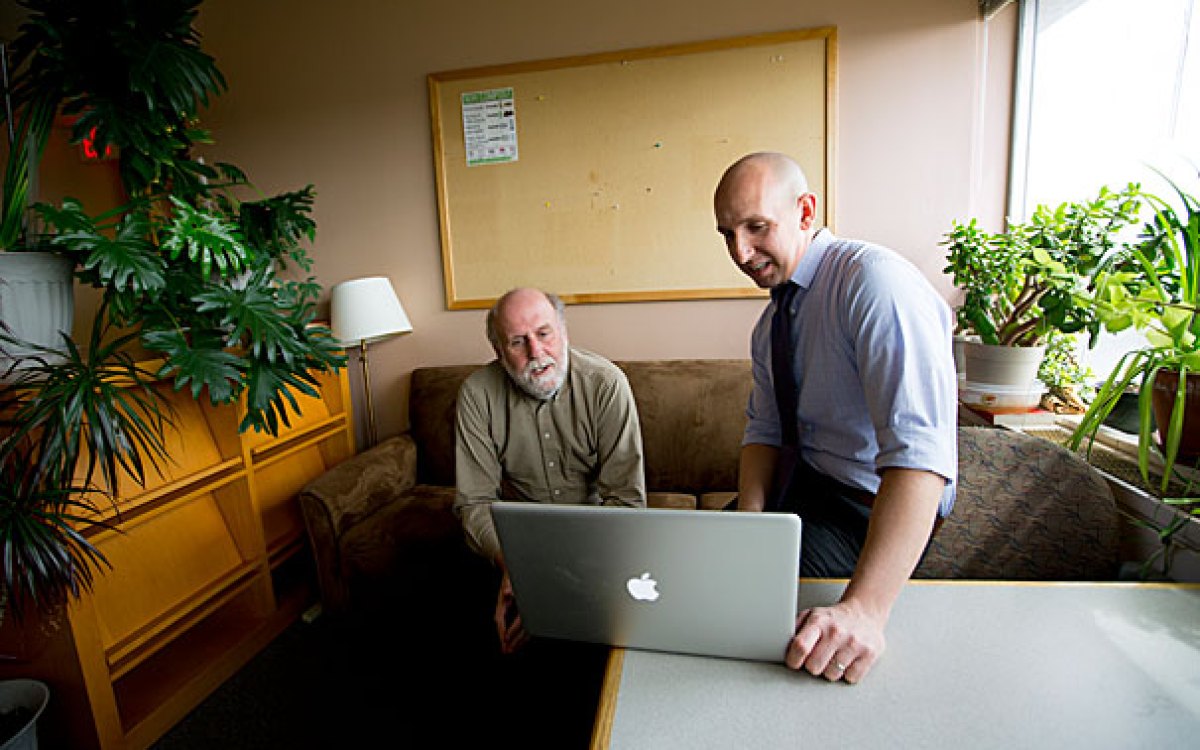
iStock
The outlook for Harvard online learning
In a Q&A, Vice Provost Bharat Anand recaps the spring’s pivot to digital, and the planning underway for fall
Most American students in higher education were forced to finish their spring semesters online because of the COVID-19 pandemic. Many of them will start the next academic year in some sort of remote learning environment as well. Harvard is no different; some University Schools already have announced that they will be conducting courses entirely online this fall.
The Gazette spoke with Vice Provost for Advances in Learning Bharat Anand, author of “The Content Trap,” to discuss the transition to virtual learning, how Harvard is planning for a fall semester largely online, and the new opportunities that could integrate virtual classrooms with traditional ones.
Q&A
Bharat Anand
GAZETTE: Tell us about Harvard’s transition to remote teaching this spring and what went into it.
ANAND: It’s still incredible to think about what happened this spring. Obviously, as a University we weren’t alone in the remote teaching transition — schools, colleges, and universities in most parts of the world had to transition to remote as well. Across Harvard, roughly 3,000 faculty and instructors engaged in remote teaching. Getting them ready meant ensuring that Zoom was integrated into Canvas, creating pedagogical guidance, and setting up workshops for faculty on remote teaching, ensuring that connectivity was robust, communicating with students, providing technical support during the live sessions, and doing this for the full range of teaching modalities across Harvard’s courses. This preparation happened within 12 days, and during spring break. All parts of the University, the Schools, Harvard University Information Technology (HUIT), the Office of the Vice Provost for Advances in Learning (VPAL), and the teaching and learning centers were involved in these efforts. I’ll just say that the efforts of faculty, staff, teaching fellows, and others across the entire University were simply remarkable.
GAZETTE: How did the actual teaching go, overall, from what you were able to gather?
ANAND: Compared with the scale of the operation, there were few technical issues related to bandwidth or other live glitches. The teaching and learning experience was, as one might expect with the quick transition, somewhat varied. For many courses, the transition was rather effective, the learning continued unabated, in many cases with high engagement, and faculty and students largely rose to the occasion. But there were challenges, to be sure — having to do mostly with teaching and learning in an entirely new environment, uneven access and time zone differences, and, importantly, the lack of in-person connections and the impact this had on students and faculty. The fact that all this was happening against the backdrop of the pandemic obviously wasn’t easy for anyone. Under the circumstances, things went well, about as well as one could have hoped.
GAZETTE: What’s the status of fall planning?
ANAND: Fall planning began midway during the remote spring semester, given all the uncertainty around health and safety and its implications for the fall semester. Planning is now well underway, and work streams are in full motion across all the Schools. It’s very challenging, to be sure, indeed about as complex a strategic problem as one can encounter. The Schools have had to plan for multiple scenarios, each requiring different forms of investment to make the educational experience impactful; uncertainty about health and safety will resolve only gradually; students need to make enrollment decisions well in advance; faculty considerations around childcare, training workshops, and workload are relevant; and, importantly, there are interdependencies across all these decisions. On top of this, as you know, Harvard has a decentralized structure, with every School typically making most decisions affecting its respective community. But at this uncommon time there’s also been an appetite for more information-sharing across the Schools and for more coordination around certain decisions, since everyone is trying to figure out answers to similar problems, and some solutions require fixed-cost investments that benefit from coordination. Indeed, there’s more communication and collaboration happening across the Schools than at any time before that I’ve seen at Harvard.
GAZETTE: How will the learning from the spring inform the fall?
ANAND: Several of Harvard’s Schools have already announced that they will be going remote for the fall, as you know. For the others that have yet to decide — like Harvard College, GSAS (Graduate School of Arts and Sciences), SEAS (Harvard John A. Paulson School of Engineering and Applied Sciences), and Harvard Business School — even if some students do return to campus, hybrid or remote teaching in some form is increasingly likely.
We ran weekly surveys this spring and have collected responses from a large number of faculty who provided input on a range of questions, from how to engage students online to teaching tips for one’s colleagues. Everyone in the fall will have the benefit of learning not just from this data and these experiences, but from having time to move farther down the learning curve — and with three months to prepare rather than 12 days.
There has been a rich set of learnings about how to engage and interact with students online too. What is really different about the online medium is that it’s a lean-forward experience. If you are not taking advantage of interactivity, you really are not taking advantage of the medium. One can read students’ thought bubbles through Chat, one can have them spontaneously discuss material in small groups through breakout rooms, one can create collaborative workspaces through Google docs. Some faculty already incorporated all of this into their teaching, but there are opportunities to disseminate such learnings far more broadly. In fact, takeaways from across Harvard are now being shared by Schools with their faculty and also integrated into summer training workshops.
GAZETTE: The spring semester, for most of America, was based largely on this new entity called a Zoom classroom, where everyone connected from their homes. Should we expect this as the platform in remote learning, moving forward?
ANAND: Zoom from your homes is a very particular form of online interaction. It’s not the only online learning platform, nor even the best for every class, but it was almost designed for a sudden lockdown like COVID-19. Teachers and students had to work from their homes, live-streaming from a classroom wasn’t possible, nor, as a result, was the use of more-dynamic platforms that had been integrated into physical spaces on campuses — including, at Harvard, the home-grown platforms HBS Live, Helix, and the VR Lab (in the Department of Earth and Planetary Sciences). Plus, Zoom can scale easily, and it’s readily integrated with existing learning-management systems.
For most courses, while Zoom will still be the standard learning platform in the fall, there are other opportunities to complement and enhance the experience. Even if students aren’t here, some on-campus classrooms may be usable by faculty to teach from. There are ways for faculty not just to sit at their desks in their homes but to have the ability to use a slightly broader space that can better simulate a classroom feel. And there are various apps that some faculty are already using that serve as add-ons to Zoom for targeted needs such as discussions, debates, or discipline-specific requirements. But the most important point to keep in mind is that the platforms are only as good as what you do with them. Ultimately, what’s far more important in creating impactful learning experiences, whether in-person or online, are the principles of effective pedagogy. How do you spark curiosity, challenge assumptions, enable discovery, and inspire learning?
GAZETTE: Are there other things we can expect that are different?
ANAND: Absolutely. The spring experience was a rapid transition, with lockdown for both faculty and students, and a curriculum and calendar that was inherited from the first part of the residential semester. In other words, it was both unusual and constrained. One can think of it as the PDF version of the residential experience, to borrow a phrase from newspapers’ transition to digital. There’s no reason why the fall should continue to resemble only a PDF rather than also incorporate components of a built-for-digital experience. There are opportunities to think more creatively about what the student experience will look like in the fall, with three months of preparation and fewer constraints. There’s also more time now to create more asynchronous materials for the fall — a luxury that faculty didn’t have in the spring with just over a week to prepare for the transition.
GAZETTE: What concrete ideas might emerge around creating some of these experiences that look different for many students?
ANAND: There are many. Start with the academic calendar, which can be stretched or compressed. Several Schools are already thinking about ways to change the length of sessions to reduce platform fatigue, or to expand the hours in the day to account for time zone differences.
There are other constraints that no longer bind, most notably having to do with co-location. The fact that everyone is one click away online has profound implications for many aspects of the online experience. For example, we can draw on experts from around the world to interact with students in any class. We already saw this in an impressive way in Economics 10 in the College this spring. We can leverage our alumni to interact with our students in new ways, within their geographies. We can perhaps tap into a larger pool of advisers — graduate students, faculty, and staff — from all the Schools to interact with our students, engage in conversations with them, or interact through informal, small-group get-togethers.
We can take advantage of the geographic dispersion of students in some courses. For example, courses might create group projects that leverage students’ local experiences, local data from their dispersed locations, and local project work wherever they are that’s then integrated into the curriculum from the start. The point is that we can start to think of a more global educational experience than before. And we can even offer some cross-School, University-wide courses since students and faculty from any School don’t need to travel across the entire campus or town to get to another classroom. Some efforts are already underway on many of these fronts, within different Schools and across the University.
GAZETTE: What about re-creating the social aspects of a campus experience? You’ve noted in your own work that experiences are about more than content — they’re about community.
More like this
ANAND: Indeed, this is the hardest part. Replicating the community aspect — the student-to-student and the intergenerational interactions — of a campus experience is surely one of the most important, and perhaps the most challenging, pieces to replicate in the online space. And it will require the most effort and creativity. In the spring we already saw a variety of virtual events, including many student-led ones. Our office (VPAL) built a platform called Socialize Remotely this spring that allows any Harvard community member to create an event in which anyone else at the University can participate. We have featured certain University-wide events this spring, starting with Michael Sandel’s conversation on “Pandemic Ethics,” and one can now build this calendar more intentionally for the fall. These are just some early stage examples. There are also some promising new ideas emerging (including some apps created by our students). … All the Schools are now starting to think about how to re-create the community experience in a more systematic, meaningful way for the fall.
To be sure, the reality is that we will never make up for certain parts of the in-person experience — the humanity, the spontaneity, the serendipity. And that’s a big loss. But the key point not to lose sight of is that there are many new experiences we can create through online media that were simply not available to us in the residential experience. This is the time, a real opportunity, to try to create and take advantage of these experiences that can set us up well in the future for a truly multiplatform experience, one that combines the best of residential with the best that technology has to offer.
GAZETTE: Are there learning opportunities we can leverage from our previous experiences with online education as a University?
ANAND: Harvard has been innovating in online learning for more than a decade. We have built up tens of thousands of person-years of experience with online assets and platforms during this period. And there’s the appetite to do even better. With the pandemic, our three-year priorities in online learning have been accelerated by 2½ years. We know what it takes to achieve great learning outcomes through online instruction. And we have familiarity with building communities through virtual platforms. We are drawing on all these experiences right now from across the University.
There’s no mystery about what online learning can do at its best. The reason it’s taken so long for it to impact the core of a university — like in any other sector of the economy — is that it’s naturally hard to change existing structures, routines, content, incentives, and the financial model of an organization, particularly when there’s no burning platform or urgent need to do so. COVID-19 changed all this.
We have yet to see, of course, what the fall experience will look like. But there’s a real opportunity in front of us, and a strong desire among all Schools to create a meaningful and impactful educational experience for our students. I am hopeful that the changes we make will serve to change not just remote education but even improve the core residential educational experience itself in lasting ways. We owe it to our students to do whatever we can to deliver an experience they will value and appreciate.
This interview has been edited for length and clarity.








